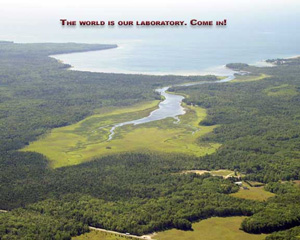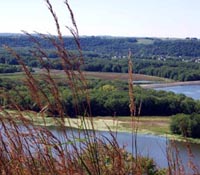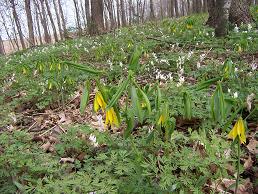Welcome to the Plant Ecology Laboratory

Goals of PEL
To gather reliable field data on vegetative composition and archive these carefully for later use and interpretation. We strongly believe in the importance of monitoring ecological change.
To compare, evaluate, and improve methods for sampling plant communities and the tools for analyzing these data.
To characterize ecological change in quantitative detail.
To identify the key drivers of ecological change, particularly those that threaten the persistence of native plant diversity.
To understand how these drivers act, alone and in combination.
To use this understanding to better conserve and restore natural communities and to inform and improve forest & wildlife management.
To increase public interest in, and understanding of, ecological change.
Here, you will find links (above and to the left) to past and current activities of the University of Wisconsin's Plant Ecology Laboratory (PEL). This work began with the pioneering work of John T. Curtis and his students in the 1940s and 50s (see History).

View of the Mississippi River
The work of the PEL aimed at testing whether plant communities represented discrete and self-organizing entities with predictable dynamics (vitalistic notions that dated back to the early 20th century and Frederic Clements) or rather reflected the independent responses of the individual species that made them up (championed by Henry Gleason). Both Curtis and Robert Whittaker at Cornell University realized that if plants responded in an 'individualistic' manner to gradients in environmental conditions, that species abundances should vary continuously in response to these conditions. This led Curtis to develop his 'continuum' concepts and to search for such patterns in the plant communities found across Wisconsin. At the same time, he sought to understand the impacts of human activities on these communities. Curtis and colleagues from the PEL also pioneered the use of multivariate methods to describe plant community composition in quantitative terms including the introduction of Bray-Curtis distance and ordination.
Active work in plant ecology continues at Wisconsin and from many distinguished graduates of the group (People). In particular, the careful and usually quantitative descriptions of plant communities at over 1400 sites provide a uniquely detailed and extensive baseline that several are using to detect, describe, and interpret ecological change over the past half century (see Publications). In addition, you can find more detailed information here on the methods used in these original and follow-up surveys, and the particular sites involved in these surveys and re-surveys.

Spring ephemerals in full bloom in a southern Wisconsin
maple forest.
Current projects involve studying shifts in local and regional diversity, exotic plant invasions, effects of surrounding landscape conditions, and the influence of plant functional traits on these patterns. Those interested in the nature and use of these data and/or potential collaboration should consult our Data section on this site. Those interested in a broader picture of all the ecological changes occurring in Wisconsin should consult recent book, The Vanishing Present, available from both the Univ. of Chicago Press and Amazon.



